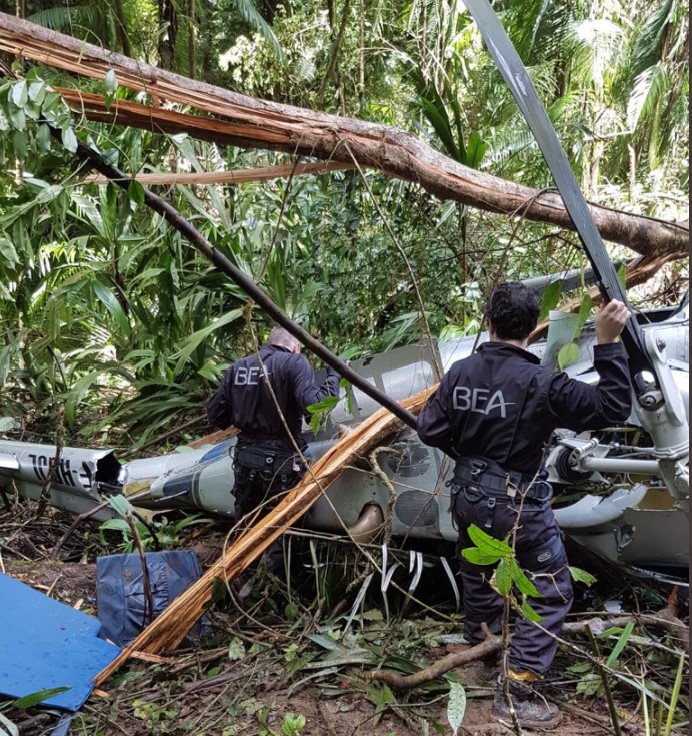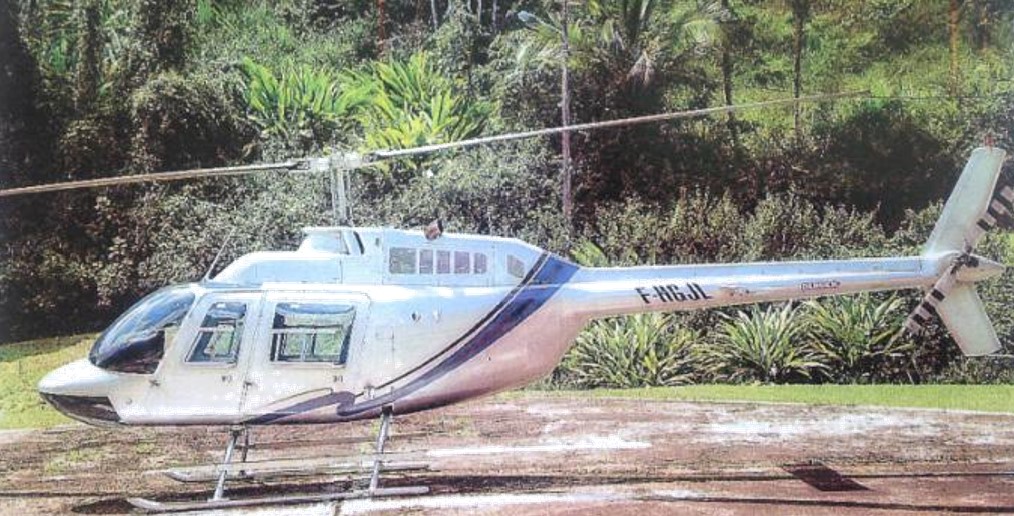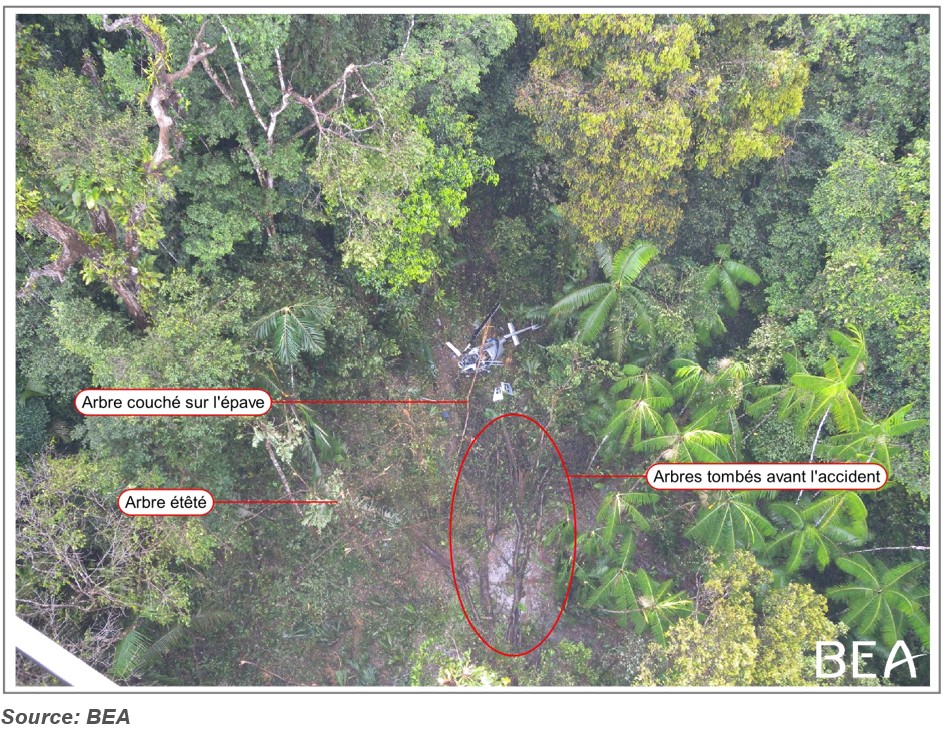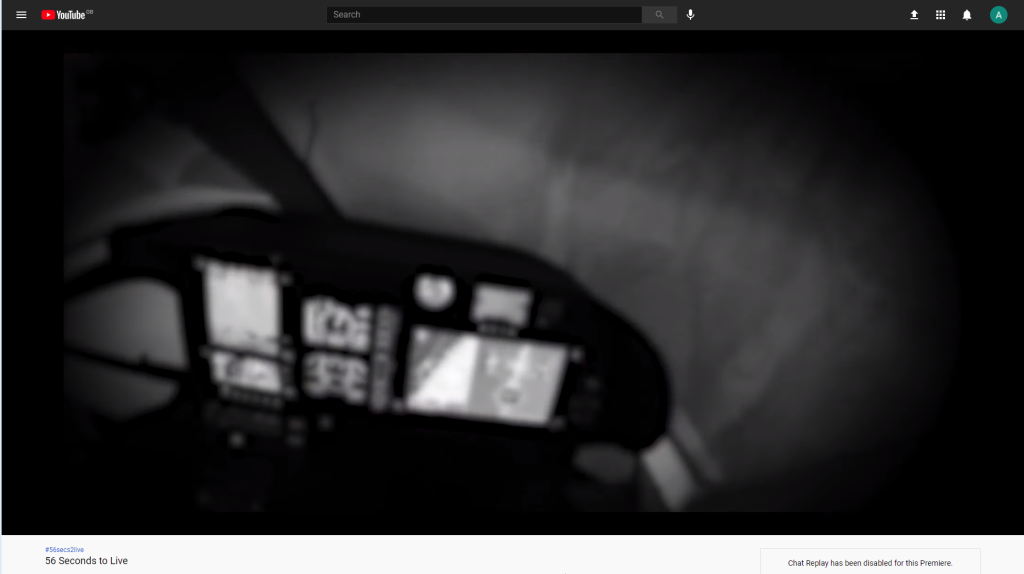Grey Charter in French Guiana: IIMC and LOC-I (AB206 F-HGJL)
On 2 May 2018 Agusta Bell AB206B3 F-HGJL crashed in the jungle of French Guiana during a flight for a gold mining company after inadvertent entry to instrument meteorological conditions (IIMC) and a Loss of Control-Inflight (LOC-I). The wreckage was located 5 hours later. The pilot and one passenger were dead but a second passenger was found alive, seriously injured.
History of the Accident Flight
According to the safety investigation report, issued on 18 November 2021 by the French Bureau d’Enquêtes et d’Analyses pour la Sécurité de l’Aviation Civile (the BEA) in French only, the pilot had departed at c 13:28 Local Time on a Visual Flight Rules (VFR) flight from the Funair operating base at Macouria to the gold mine at Grand Usine 93 nm away. F-HGJL was neither equipped for instrument flight mor equipped with windscreen wipers.
The passengers were going to carry out a repair on an excavator at the mine. The surviving passenger said “the weather was fine when they took off”.
Shortly before 13:50 the aircraft climbed from around 900ft to 1644ft before a rapid decent (up to 5600ft/min) and ground impact at c 15:51. The BEA were able to reconstruct the flight using data from the Garmin GPSMAP296 and a Helisafe data recorder aboard.
During the final climb oscillations in engine gas generator speed indicated to the investigators that potentially the pilot was attempting to slow the helicopter to either avoid entering cloud or because they had indeed entered cloud. Additionally, vertical acceleration reached a maximum of 1.8 g “which could indicate that the helicopter had entered an area of turbulence”. Investigators were not able to conclude if the subsequent descent was deliberately initiated but did conclude that ultimately there was a loss of control – inflight.
A video captured by a passenger on their phone at 14:48 showed that “the helicopter was operating in a very cloudy, rainy environment with poor visibility” according to the BEA. The pilot of the first helicopter on scene to search for survivors stated that the weather was typical for French Guyana in the rainy season with a low ceiling, variable visibility (dropping from 5 km during successive squalls). Météo-France estimated the cloud base in the area was between 1,000 and 1,200 ft and that there was heavy precipitation between 12:30 and 16:00.
The wreckage was found in a narrow clearing. Two trees were damaged. One likely by the main rotor (a potion of blade was found 30m away) and the other by the left-hand skid, that most likely resulted in the helicopter rolling onto its right-hand side.
Investigators determined that “the helicopter struck the ground with very low horizontal speed”.
In the two seconds preceding impact, the decrease in vertical speed could be consistent with an attempt to flare by the pilot.
No pre-impact defects with the aircraft were found.
The Pilot
The pilot was 27, held a CPL(H) and had just 234 hours of total time and only 14 hours on type. He did not hold an Instrument Rating but was said to be familiar with operating in a jungle environment and the local weather conditions. He also had 768 hours as a HEMS Technical Crew Member (TCM).
The pilot had formed his own company in October 2017 to offer his services as an independent pilot, seemingly with the intent of hours building until reaching the minimum of 1000 hours required by their former employer for HEMS pilots. The company did not hold an Air Operator’s Certificate (AOC).
Flight Preparations
The BEA state:
The investigation could not determine whether the pilot had carried out research to obtain information on the weather conditions expected during his flight. He did not contact the meteorologist based at the Cayenne airport. The record of its internet connections did not indicate any consultation of a weather forecast or observation site. No documentation relating to a meteorological preparation was found in the wreckage of the helicopter.
Legal Status of the Operation: Grey Charter
The mining company needed to charter an aircraft to transport the mechanics to the mine site. The BEA note that:
In Guyana, two [helicopter] operators have an AOC. As part of their commercial air transport activity, these operators have imposed a minimum crew experience of between 1,000 and 1,500 hours as Captain.
The logistics manager had no understanding of the regulatory requirements for Commercial Air Transport and the selection was based on price (picking the smallest aircraft for the task). The logistics manager of the mining company placed a purchase order for the aircraft but not with either AOC holder.
The BEA report, when translated, is a little ambiguous so it is not clear if the aircraft owner separately contracted the pilot or whether the PO was placed with the pilot’s own company.
The BEA do however then do discuss at length illicit Commercial Air Transport without an AOC, sometimes called grey charter, and compare this case to the 2019 accident that killed footballer Emiliano Sala that recently resulted in the conviction of the individual who organised the flight.
BEA Conclusions
The pilot undertook a passenger transport flight when the meteorological conditions did not guarantee the complete completion of the flight in visual flight conditions. The investigation could not determine whether the pilot was aware of the weather conditions before the flight.
It is possible that the pilot underestimated the risks associated with visual flight in degraded weather conditions. This underestimation could be related to the pilot’s low experience as Aircraft Commander and regular exposure to degraded weather conditions while working as a technical crew member of an emergency medical service.
During the flight, the pilot was confronted with a situation during which he may have encountered severe turbulence and / or lost external visual references and was not able to maintain control of the helicopter.
The lack of total piloting experience, in particular on type, may have contributed to this loss of control.
Safety Resources
The European Safety Promotion Network Rotorcraft (ESPN-R) has a helicopter safety discussion group on LinkedIn.
ESPN-R / EHEST Leaflet HE 13 Weather Threat For VMC Flights:
This EHEST leaflet covers various subjects including Degraded Visual Environments (DVEs).

USHST video 56 seconds to live:
You may also find these Aerossurance articles of interest:
- Catastrophe in the Congo – The Company That Lost its Board of Directors
- Italian HEMS AW139 Inadvertent IMC Accident
- A Try and See Catastrophe: R44 Accident in Norway in Bad Weather
- Plan Continuation Bias & IIMC in Kenyan Police AW119 Accident
- BK117 Impacts Sea, Scud Running off PNG
- A Lethal Cocktail: Low Time, Hypoxia, Amphetamine and IMC
- Inexperienced IIMC over Chesapeake Bay: Reduced Visual References Require Vigilance
- Regulator Missed the Chance to Intervene Before Fatal Tour Accident say TAIC
- CFIT Gangnam Style – Korean S-76C++ and Decision Making
- Survey Aircraft Fatal Accident: Fatigue, Fuel Mismanagement and Prior Concerns
- Regulatory oversight of New Zealand helicopter operators was challenged after a 2015 accident
- Execuflight Hawker 700 N237WR Akron Accident: Casual Compliance
- B206B Hit by Truck in Forced Landing after 16 Months of Operation with Unairworthy Engine
- UPDATE 11 December 2021: Canadian Flat Light CFIT
- UPDATE 11 February 2022: Erratic Flight in Marginal Visibility over New York Ends in Tragedy
- UPDATE 12 March 2022: Black Hawk Scud Running in Tennessee: IIMC & CFIT









Recent Comments